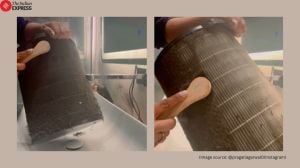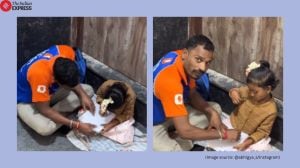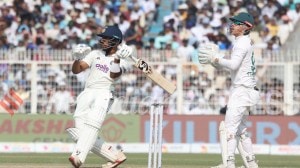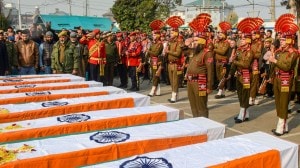Gender gap in UG programmes widens, gains of last few years lost to pandemic: AISHE Report
For instance, a year after the gender gap in BCom closed in 2019 — there were as many women as there were male students — the AISHE report for 2020-2021 showed that this gain was lost in the subsequent year that was marred by large-scale disruptions due to the pandemic.
 From 100 women per 100 men who registered for the BCom programme in 2019, the enrollment for women fell to 94 for every 100 men in 2020 (Representational/File)
From 100 women per 100 men who registered for the BCom programme in 2019, the enrollment for women fell to 94 for every 100 men in 2020 (Representational/File) Crucial gains made in closing the gender gap across different undergraduate programmes suffered a setback in the pandemic year, according to the latest All India Survey on Higher Education (AISHE) released by the Education Ministry on Sunday. Data show that the number of women for every 100 men enrolled across different Bachelor’s programmes dropped in the academic year 2020-21.
For instance, a year after the gender gap in BCom closed in 2019 — there were as many women as there were male students — the AISHE report for 2020-2021 showed that this gain was lost in the subsequent year that was marred by large-scale disruptions due to the pandemic.
From 100 women per 100 men who registered for the BCom programme in 2019, the enrollment for women fell to 94 for every 100 men in 2020 — a dip that takes the enrollment figures closer to what it was in 2016 (93 women per 100 male students).
Similar drops were witnessed in other programmes too, including medicine where, from 110 women for every 100 men in MBBS in 2019-20, there are now 100 women in 2020-21.
Other undergraduate programmes such as pharmacy, which came close to plugging the gender gap in 2019 — 93 women for 100 men — saw a drastic drop to 66 women in 2020-21.
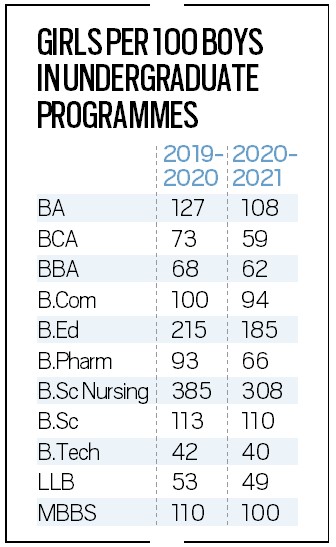
Undergraduate programmes such as nursing and education, which have traditionally had more women participation, also witnessed a significant fall in numbers for women – from 385 in nursing and 215 in education (for every 100 men) in 2019-20, to 308 and 185 women, respectively, in 2020-21.
The gender gap in undergraduate programmes such as computer science, business administration, pharmacy, technology and law – which have always had a gender skew in favour of men – continues to be large.
According to the latest survey, the total student enrollment in higher education went up from 3.85 crore in 2019 to about 4.13 crore in 2020-21, an increase of nearly 29 lakh. Out of the total enrolled, 51.3% or 2.12 crore are male and 48.7% are women.
Overall, the Gross Enrollment Ratio (GER) in higher education for the age group of 18 to 23 years is 27.3% as against 25.6 % in 2019-20. GER is a statistical measure to determine the number of students enrolled in undergraduate, postgraduate and research-level studies within the country and is expressed as a percentage of the population in the 18-23 years age group.
According to the survey, the GER for women is more than the GER for men – a trend that has been on since 2017-18. Gender Parity Index (GPI), the ratio of female GER to male GER, has increased from 1 in 2017-2018 to 1.05 in 2020-21.
At the postgraduate level, too, the number of women pursuing business administration, science, technology and commerce has gone down in 2020-21 as compared to 2019-2020.
At the postgraduate level, the only programme which has seen a hike in the number of women per 100 men is MCom – from 186 women in 2019 to 198 in 2020-21.
Programmes like business administration and technology at the post-graduation level continue to be male bastions.
AISHE findings are based on responses from 1,113 universities, 43,796 colleges and 11,296 standalone institutes. The data also shows that during 2020-21, the number of universities increased by 70 and the number of colleges increased by 1,453.





- 01
- 02
- 03
- 04
- 05












